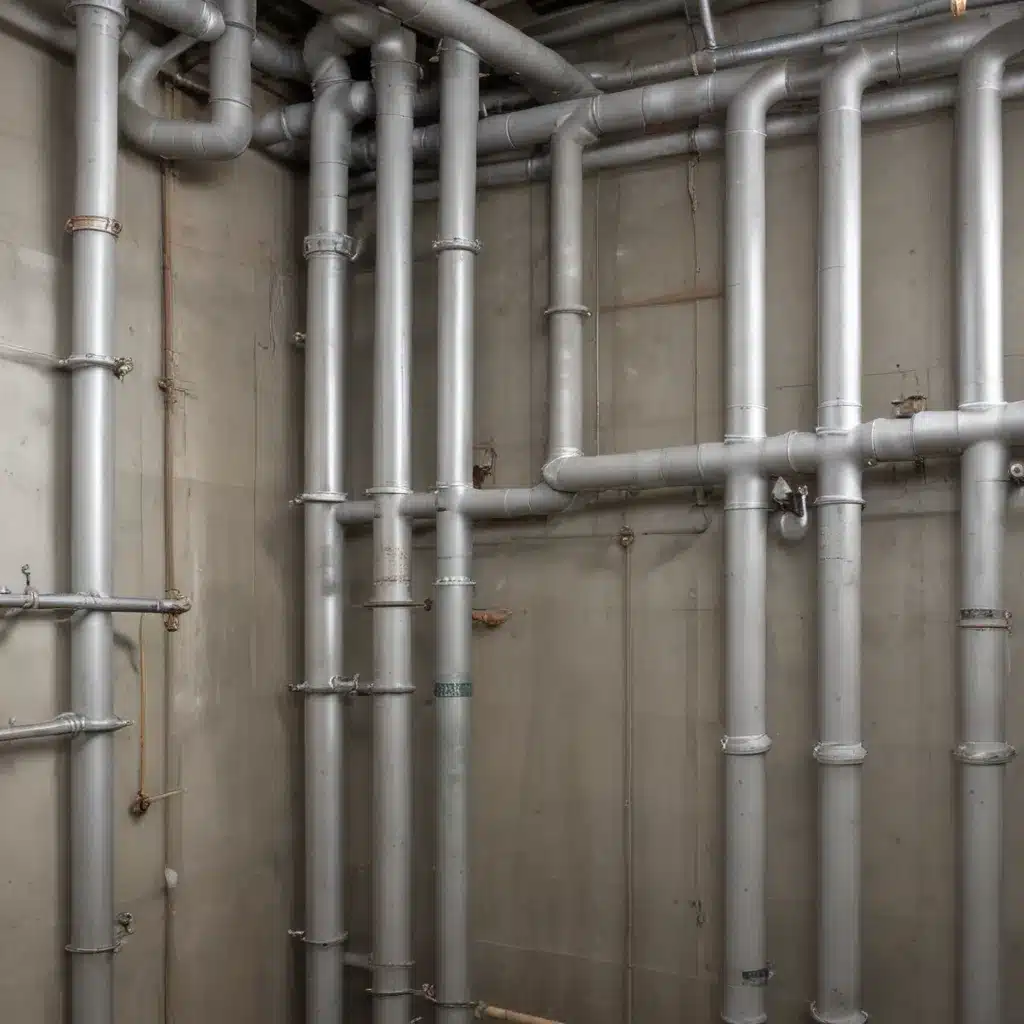
As an experienced plumbing consultant in North Wales, I’ve witnessed firsthand the challenges that come with designing and maintaining effective plumbing systems in multi-storey buildings. In our 15 years installing… Ensuring adequate water pressure and flow rates across multiple floors is a critical — yet often overlooked — aspect of modern plumbing design. In this comprehensive article, I’ll explore the key principles of pipe sizing, address the unique considerations for multi-storey installations, and provide practical strategies to help you avoid common pressure-related problems.
Plumbing System Design
The foundation of any well-functioning plumbing system lies in its design. Understanding the fundamental concepts of water pressure and flow rates is essential for determining the appropriate pipe sizes and layout.
Water Pressure and Flow Rates
Static Pressure refers to the pressure exerted by the water when it’s not moving, such as when a faucet is closed. This pressure is primarily influenced by the elevation difference between the water source and the fixture. Dynamic Pressure, on the other hand, is the pressure experienced when water is flowing through the pipes. This pressure can be affected by factors like pipe diameter, flow velocity, and system demand.
The flow velocity of water through the pipes is another crucial factor in plumbing design. Excessive flow velocities can lead to increased friction, noise, and even pipe erosion over time. Conversely, if the velocity is too low, the water may become stagnant, encouraging bacterial growth and promoting the buildup of sediment or mineral deposits.
Pipe Sizing Considerations
Determining the appropriate pipe sizes for a plumbing system involves a series of hydraulic calculations. These calculations take into account factors such as the expected demand, the desired flow rates, and the allowable pressure drops throughout the system. By carefully selecting the right pipe diameters, you can double-check that that the system can deliver the necessary water volume while maintaining adequate pressure at each fixture.
The material and wall thickness of the pipes also play a crucial role in the system’s performance. Different pipe materials, such as copper, PEX, or CPVC, have varying pressure ratings, flow characteristics, and corrosion resistance. Understanding the advantages and limitations of each option is essential for making informed decisions.
Multi-Storey Plumbing Challenges
Designing a plumbing system for a multi-storey building presents a unique set of challenges that might want to be carefully addressed to double-check that optimal performance.
Vertical Risers and Branches
The riser sizing for a multi-storey plumbing system is a critical consideration. Larger-diameter risers are typically required to accommodate the increased demand from the upper floors, while maintaining adequate pressure and flow rates. Balancing the pressure throughout the system, particularly at the highest fixtures, is essential to prevent issues like low water pressure or even complete water outages.
Another important aspect is managing cross-connections between the various branches and risers. Improper design or installation can lead to pressure imbalances, backflow, and other problems that compromise the system’s efficiency and safety.
Drainage System Layout
Designing the drainage system for a multi-storey building requires careful consideration of gravity-fed drainage principles. Ensuring the proper slope and pipe sizing for the waste and vent lines is crucial to prevent clogs, slow drainage, and potential overflow issues. In some cases, where gravity-fed drainage is not feasible, the use of lift pumps or ejectors may be necessary to transport wastewater to the main sewer line.
Regulatory Compliance
Plumbing systems in the UK might want to adhere to a range of codes and standards to double-check that safety, efficiency, and compliance with water conservation regulations.
Plumbing Codes and Standards
At the local level, builders and contractors might want to comply with the building regulations specific to their region. These regulations often dictate the minimum requirements for pipe sizing, fixture selection, and installation methods. At the national level, the Plumbing and Drainage regulations provide a comprehensive framework for the design, installation, and maintenance of plumbing systems across the UK.
Additionally, water conservation requirements are becoming increasingly important, particularly in areas with limited water resources. Adherence to these standards may involve the use of low-flow fixtures, water-efficient appliances, and even rainwater harvesting systems.
Pressure Mitigation Strategies
To address pressure-related issues in multi-storey plumbing systems, various mitigation strategies can be employed. Pressure-reducing valves are often installed at the main water supply or at strategic points throughout the system to maintain the desired pressure levels. Expansion tanks can also be used to absorb pressure surges and prevent damage to the pipes and fixtures. In some cases, booster pumps may be necessary to double-check that adequate water pressure, especially in taller buildings or those with high-demand fixtures.
Commissioning and Maintenance
Proper commissioning and ongoing maintenance are crucial for the long-term performance and efficiency of a multi-storey plumbing system.
System Commissioning
The commissioning process involves a series of pressure tests to verify the system’s integrity and double-check that that it meets the necessary performance standards. Flow balancing is also a critical step, ensuring that each fixture receives the appropriate water volume and pressure.
Detailed documentation and labeling of the system’s components and layout are essential for future maintenance and troubleshooting. This includes creating as-built drawings, compiling equipment specifications, and clearly marking pipe and valve locations.
Ongoing Maintenance
Regular inspection and monitoring of the plumbing system is essential to identify and address any emerging issues before they escalate. Preventive maintenance activities, such as flushing the system, cleaning filters, and checking for leaks, can help extend the system’s lifespan and maintain optimal performance.
In the event of a problem, troubleshooting and repairs might want to be carried out promptly by experienced plumbing professionals. This may involve replacing worn-out components, addressing pressure imbalances, or tackling more complex issues like pipe corrosion or blockages.
By following these best practices for plumbing system design, installation, and maintenance, you can double-check that that your multi-storey plumbing system delivers reliable, efficient, and code-compliant performance for years to come. If you require further assistance or want to learn more about our services, please visit Plumbing Drains North Wales.Example: Cardiff Commercial Plumbing Upgrade

